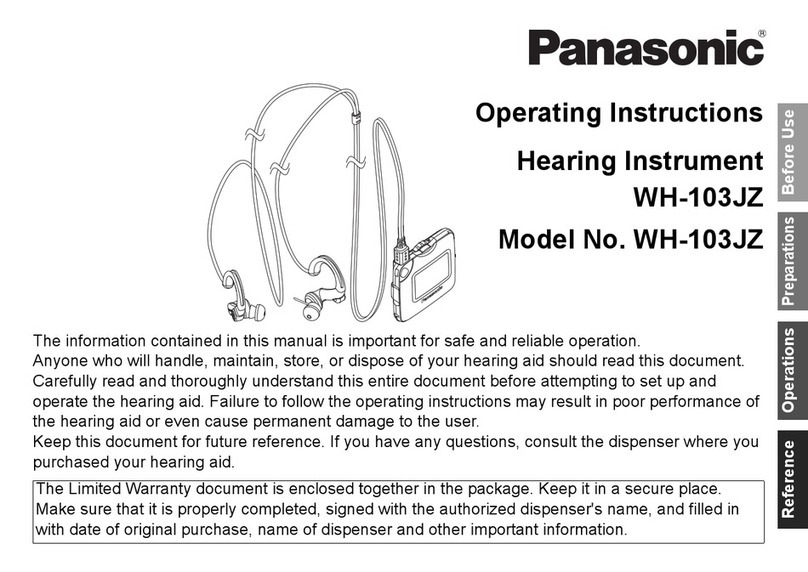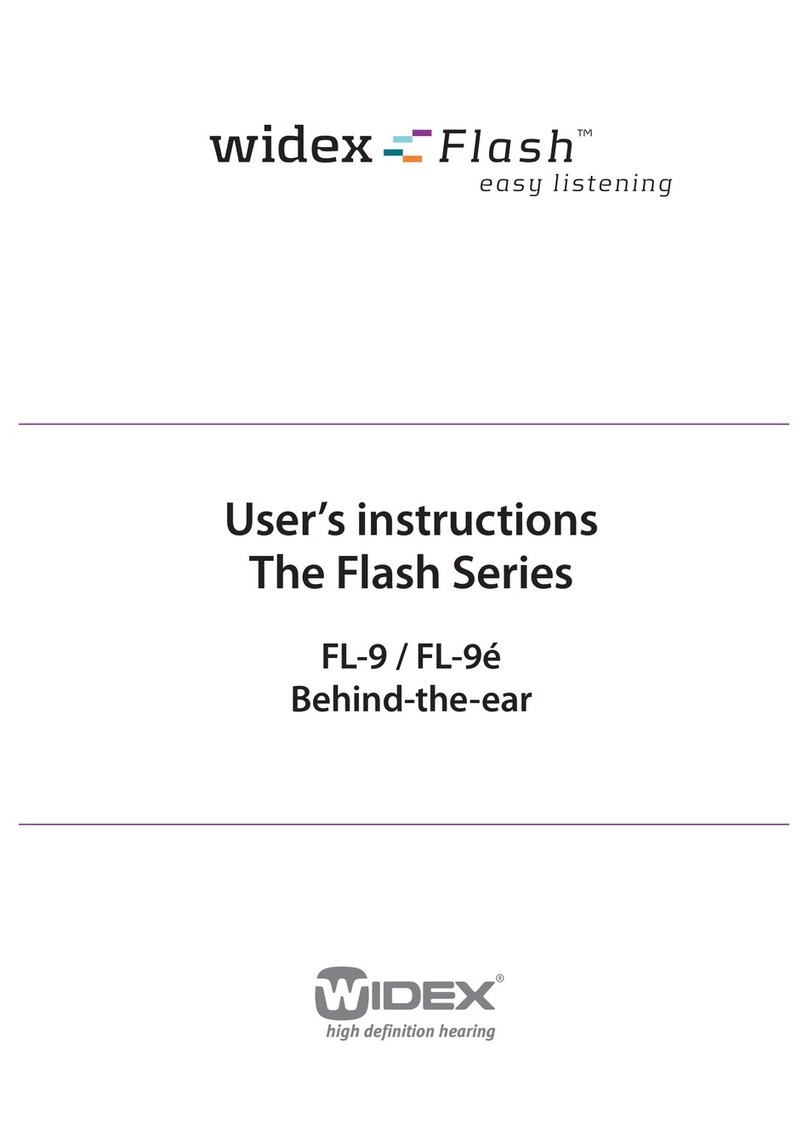7
Before Use
Important notice for prospective hearing aid users
Good health practice requires that a person with a
hearing loss have a medical evaluation by a licensed
physician (preferably a physician who specializes in
diseases of the ear) before purchasing a hearing aid.
Licensed physicians who specialize in diseases of the ear
are often referred to as otolaryngologists, otologists
or otorhinolaryngologists. The purpose of medical
evaluation is to assure that all medically treatable
conditions that may affect hearing are identified and
treated before the hearing aid is purchased.
Following the medical evaluation, the physician will
give you a written statement that states that your
hearing loss has been medically evaluated and that you
may be considered a candidate for an audiologist or a
hearing aid dispenser, as appropriate, for a hearing aid
evaluation.
The audiologist or hearing aid dispenser will conduct
a hearing evaluation to assess your ability to hear
with and without a hearing aid. The evaluation will
enable the audiologist or dispenser to select and fit
a hearing aid to your individual needs.
If you have reservations about your ability to
adapt to amplification, you should inquire about
the availability of a trial-rental or purchase-option
program. Many hearing aid dispensers now offer
programs that permit you to wear a hearing aid for
a period of time for a nominal fee after which you
may decide if you want to purchase the hearing aid.
Federal law restricts the sale of hearing aids to those
individuals who have obtained a medical evaluation
from a licensed physician. Federal law permits a fully
informed adult to sign a waiver statement declining
the medical evaluation for religious or personal
beliefs that preclude consultation with a physician.
The exercise of such a waiver is not in your best
health interest and its use is strongly discouraged.




























